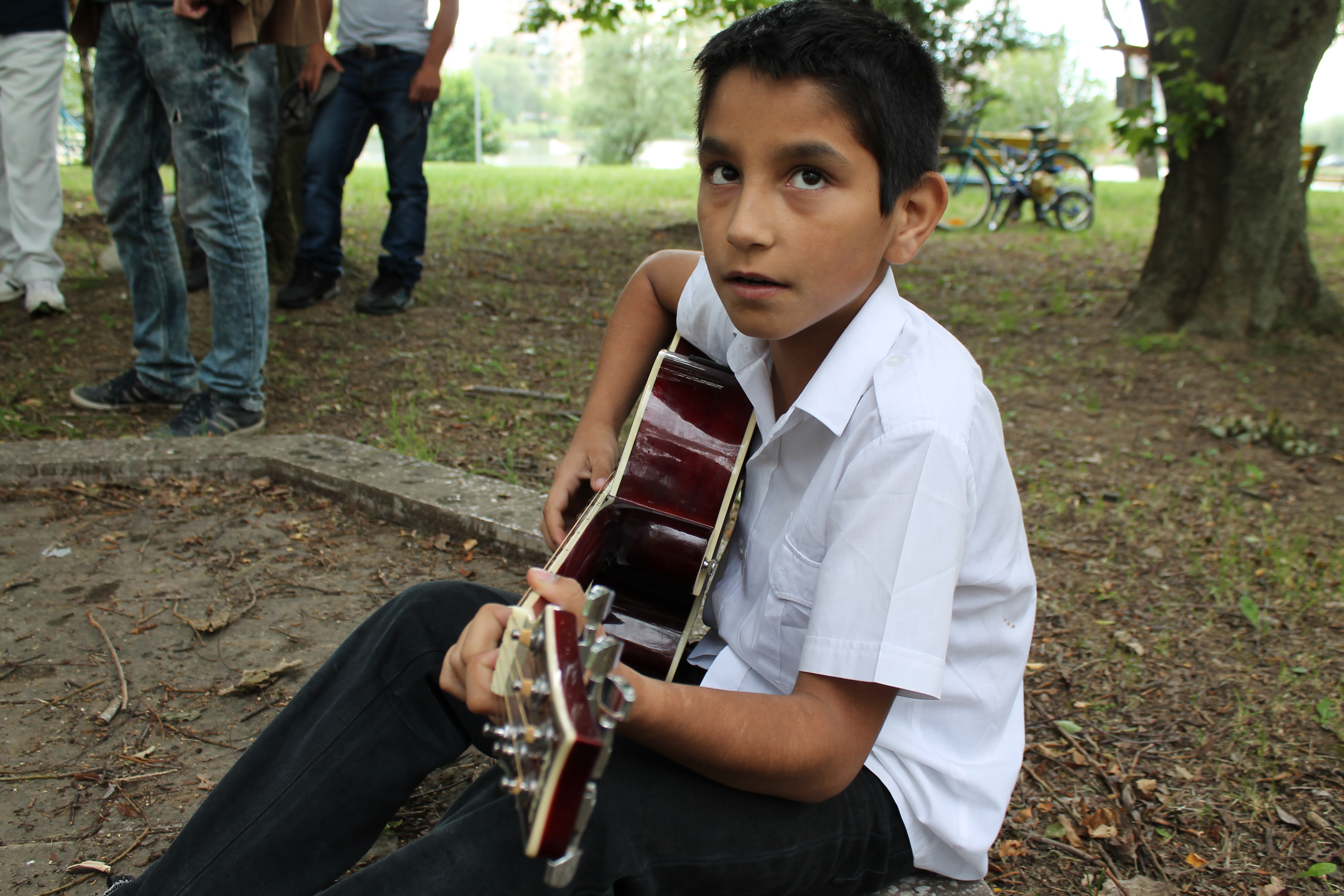A common element of Romani culture is music. Whether singing and performing on street corners, playing cellos and violins in orchestras, or winning first place at local school competitions, the Romani people often showcase a talent for harmony and rhythm.

“You can say it’s in their genes,” one Romani mother told me. “No one teaches the girls to dance, but they dance. The boys can just pick up any instrument and within a day they can play it.”
I first came into contact with the Romani style of folk music near the fountains and side streets of downtown Košice. Three boys were practicing acoustic guitar on a park bench in an effortless wave of interweaving chords and melodies. Later that evening, I saw them performing in front of restaurants along the main road for donations.
When I visited Prešov, a university town near Košice, three men jammed on violins and acoustic guitars, laughing and calling out to passersby. I heard them play everything from traditional Slovak songs to the Beatles.
I visited a school with Romani children in Košice. The children were set to perform at a local park on Saturday for the community. They proudly shared the songs they’d been preparing and two boys jammed on acoustic guitars with an intuitive sense of the other’s timing and style. They were a little awkward since I was a stranger with a camera who couldn’t speak their language, but this didn’t stop them from singing to the best of their abilities.
On Saturday, I reached the park around 2:30 p.m. and met Marcel, one of the music teachers. With his long dark hair and brown leather jacket he was easy to spot. The children arrived soon afterward to the Plaz or beach which the park is called due to the small lake with water ski and wake board jumps in the middle of the area.
Slovak families played games set up by the city while the children waited for their turn to sing. Marcel was mildly annoyed that the event wasn’t planned well. We had been waiting for an hour and a half.
“These people are crazy,” he told me. “No organization.”
“Where are the children?” I asked. We both looked to the wooded area of the park under the hanging ropes course where the children sat in a circle of their own. In an unguarded moment, they had slipped away under the trees and were playing together, practicing their songs for the performance. I sat beside them and listened.
Under the green-lit canopy of the trees, with water droplets still falling from the recent shower, the children laughed and sang. After a while, their teachers came and joined the impromptu performance, and they went through the rest of the program.
Finally, after waiting for nearly three hours, it was time for the children to perform for the crowd. They clustered around a bench in the park with a small sound system and two microphones. The Slovak families listened and clapped politely as the students had their best run yet.
Many Romani songs are slow lyrical laments known as “szomorú nóta. ‘Roma sad songs’ are what my supervisor calls them. They also play fast, dance songs, known in Romani as leaping songs.
One girl wearing a bright blue flower that was nearly as big as her head sang a solo for the crowd a cappella. Her voice rose and fell in wrenching crescendos.
“Do you know what’s she saying?” My supervisor asked the first time we heard the song when she practiced at the school. “It’s a Roma sad song talking about having to go to the Dark Land.”
Romani folk songs are often tinged with melancholy and hints of another world. Maybe it stems from years of slavery through the 16th and 17th centuries or the oppressive legislation and discrimination that lead to the Porrajmos or Devouring: the Romani Holocaust of the 1940s.
Maybe these songs come from a collective search for acceptance and identity in a society that leads separate, and certainly not equal, lives.
This week, I read from a book called “The Blue Sweater” about the Jewish concept of memory: how someone in a culture must bear witness and guard the memories of the people.
Perhaps this is the Romani way of preserving their history: through sad, searching songs and suspended moments under the trees.
After the performance ended, the children ran to the playground and piled onto the merry-go-round, spinning and laughing like they had no troubles in the world.
I remembered the words of the girl’s song and hoped the children would have more of these moments as they grew into adulthood and continued to share their lives and stories with the culture around them.














Leave a Reply